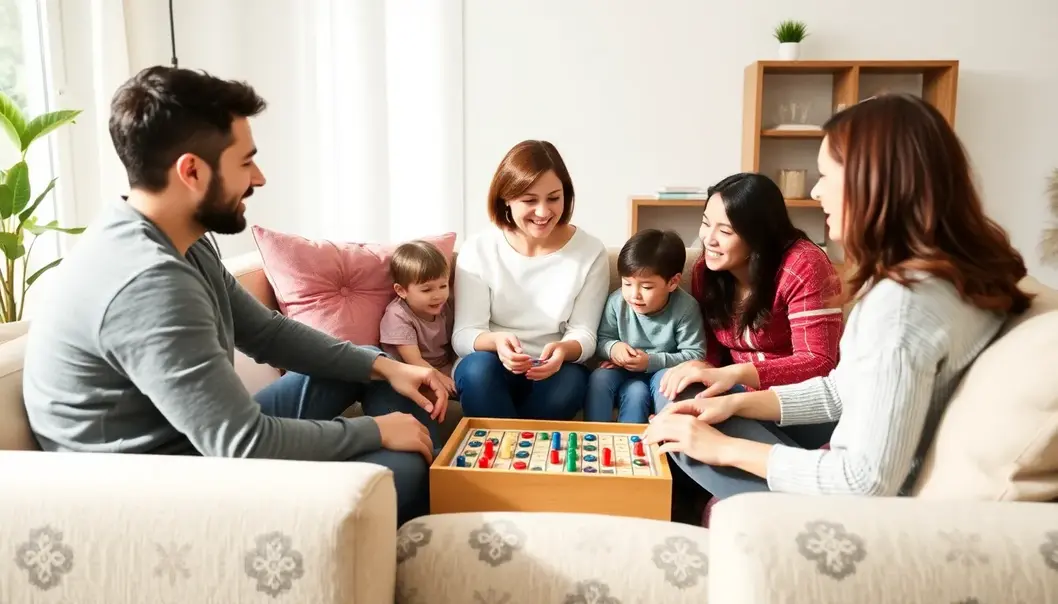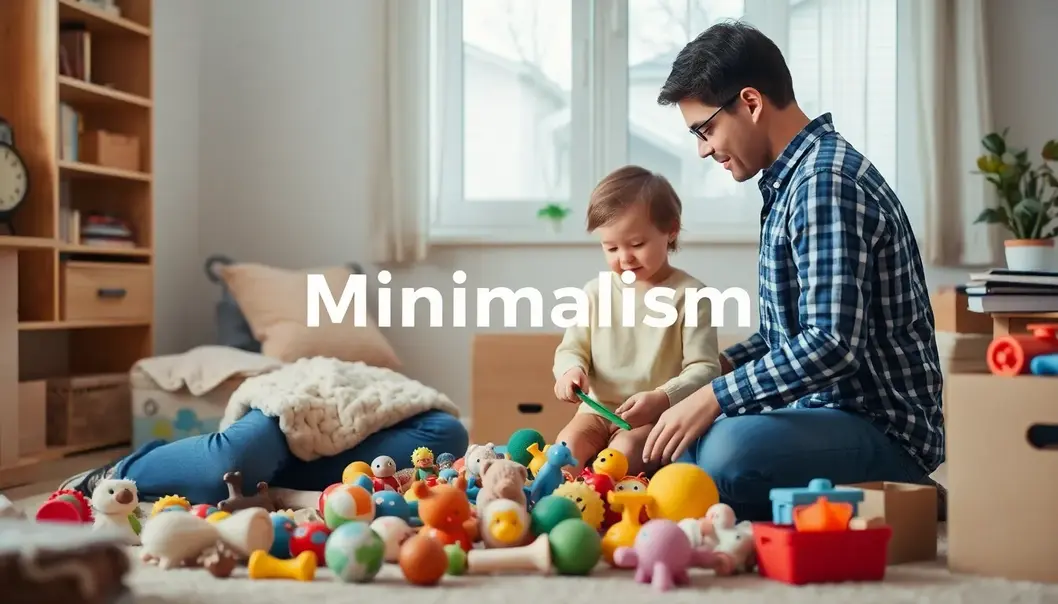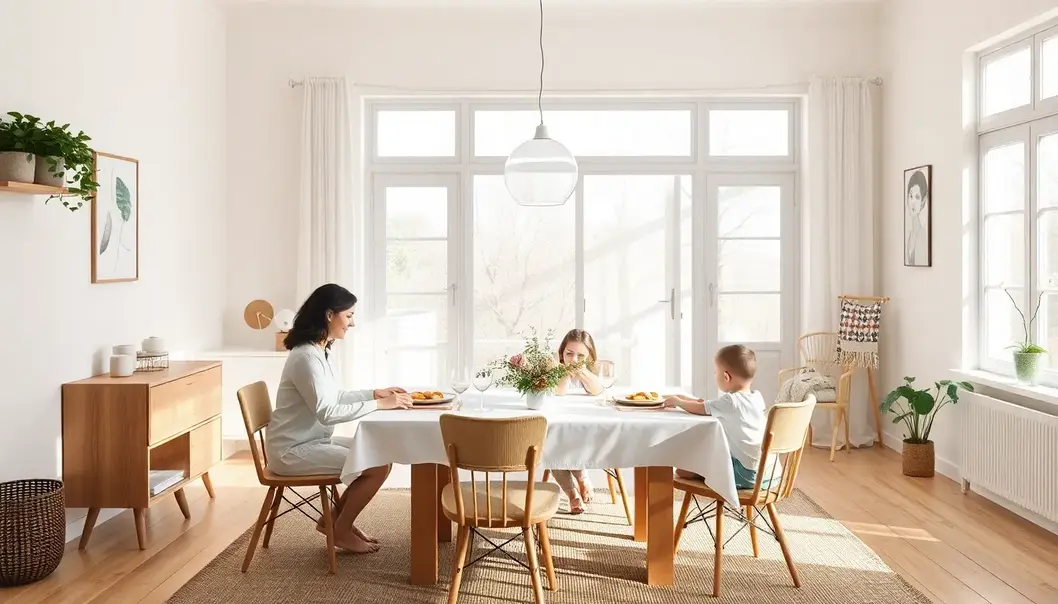Living with less can often feel daunting, especially as a parent juggling the demands of family life. However, embracing a minimalist lifestyle can be a breath of fresh air, bringing clarity and focus to what truly matters. By simplifying your surroundings, you create space for more meaningful experiences and connections, even with a busy household. While there are undeniable advantages, minimalism also presents unique challenges for families accustomed to a certain level of comfort and abundance. As parents, it’s essential to navigate these waters thoughtfully, ensuring that a minimalist approach enhances rather than restricts family life. Here, we explore the pros and cons of adopting a minimalist lifestyle as parents.
The Bright Side: Benefits of Minimalist Living for Families

Adopting a minimalist lifestyle can transform family dynamics in powerful ways. By focusing on what truly matters, families find more time for each other, reduce daily stress, and even support environmental well-being.
One of the most immediate benefits families notice is enhanced bonding. With fewer distractions cluttering the home, parents and children can engage more deeply with each other. Simple activities, like taking a walk or having a family game night, become more enjoyable when the pressure of maintaining a chaotic household is lifted.
Moreover, minimalism reduces stress significantly by streamlining daily routines. Without the constant need to manage excessive possessions, parents find their mental load lightened. This shift gives them more time for rest and recreation, which positively influences their interactions with their children. For many families, this has meant fewer arguments and more peaceful evenings.
Environmentally, embracing minimalism means consuming less and wasting less, leading to a greener planet. Families often develop a heightened awareness of their environmental impact, choosing sustainable products and practices that align with their minimalist ideals.
Transitioning to minimalism begins with practical steps. Start by decluttering significant spaces such as playrooms. Encourage children to choose their favorite toys, focusing on quality over quantity. This simple act teaches kids valuable life skills about prioritization and attachment.
Simplifying meal planning can further reduce stress. By limiting meal choices yet ensuring nutritional diversity, families save time and reduce decision fatigue. Planning meals in advance and using ingredients mindfully helps uphold nutritional standards while eliminating waste.
Real-life experiences show the upsides of minimalism. The Johnson family, for example, found that reducing their material possessions brought them closer together. Their children, initially resistant, became enthusiastic participants, cherishing less but more meaningful belongings. With newfound free time, they’ve enjoyed exploring local parks and community events together.
Testimonies like these reflect the profound improvement in quality of life achieved through minimalism. While the next chapter will address potential pitfalls, it’s clear that minimalism holds the promise of richer familial relationships and a more sustainable lifestyle.
Potential Pitfalls: Challenges of Minimalism in Family Life

Adopting a minimalist lifestyle as a family comes with its unique set of challenges. While the rewards include reduced clutter and increased clarity, the journey there isn’t always straightforward. One of the primary challenges parents face is resistance from children. Kids, particularly those attached to certain toys or clothing, may struggle with letting go. Communication is key to overcoming this hurdle. Involving children in the decluttering process can transform resistance into collaboration. Start by explaining the reasons behind minimalism, using age-appropriate language, and encourage them to choose which items mean the most to them.
Managing sentimental items presents another significant challenge. Parents often find themselves torn between the desire for simplicity and the emotional value attached to certain possessions. To navigate this, consider setting aside a small space for truly meaningful items. Limit this space as a compromise—allowing some cherished memories to remain without overwhelming your environment.
Balancing simplicity with comfort is crucial in maintaining a harmonious minimalist household. Families need to find that sweet spot where simplicity enhances rather than reduces comfort. Setting realistic goals is essential; minimalism doesn’t mean having the bare minimum, but rather having what truly serves the family’s needs. Create flexible guidelines rather than rigid rules, acknowledging that every family member will have unique needs and preferences.
Emotional attachments to possessions can complicate decision-making. A useful strategy is to establish criteria for these decisions. Ask yourself whether an item brings joy, serves a useful purpose, or holds irreplaceable sentimental value. If the answer is no, it might be time to let it go. This careful evaluation aids in preserving emotional well-being while still achieving decluttering goals.
To establish a supportive atmosphere for this transition, regular family discussions can be beneficial. Evaluate what’s working and what isn’t, and be open to adjustments. Creating a collective vision board for the family can also help everyone stay focused on the benefits of minimalism.
While the path to family minimalism might seem daunting, remember that flexibility and communication are your greatest allies. Set gradual goals and celebrate small victories along the way. This journey not only aims to declutter physical spaces but also strives to foster a more intentional and connected family life.
Final words
Adopting a minimalist lifestyle as a parent can bring about a profound shift in how you relate to your possessions, home, and family. While the journey has its challenges, the rewards of greater simplicity and joy are well worth the effort. By thoughtfully considering your family’s unique needs and involving everyone in the process, you can create a loving and supportive environment that prioritizes experiences over excess. As you embrace minimalism, remember that the goal is to enhance your family’s quality of life, making space for what truly matters.
Ready to simplify your family life? Start your minimalist journey today and experience more freedom and focus. Visit us for more tips and resources!
Learn more: https://minimalistlivingtips.com/parents
About us
Minimalist Living Tips provides resources and support for families looking to simplify their lives. Our platform offers a comprehensive guide to adopting minimalism, including expert tips, product recommendations, and community forums. Join us and transform your home and lifestyle with practical advice that caters to the unique challenges of family living.

